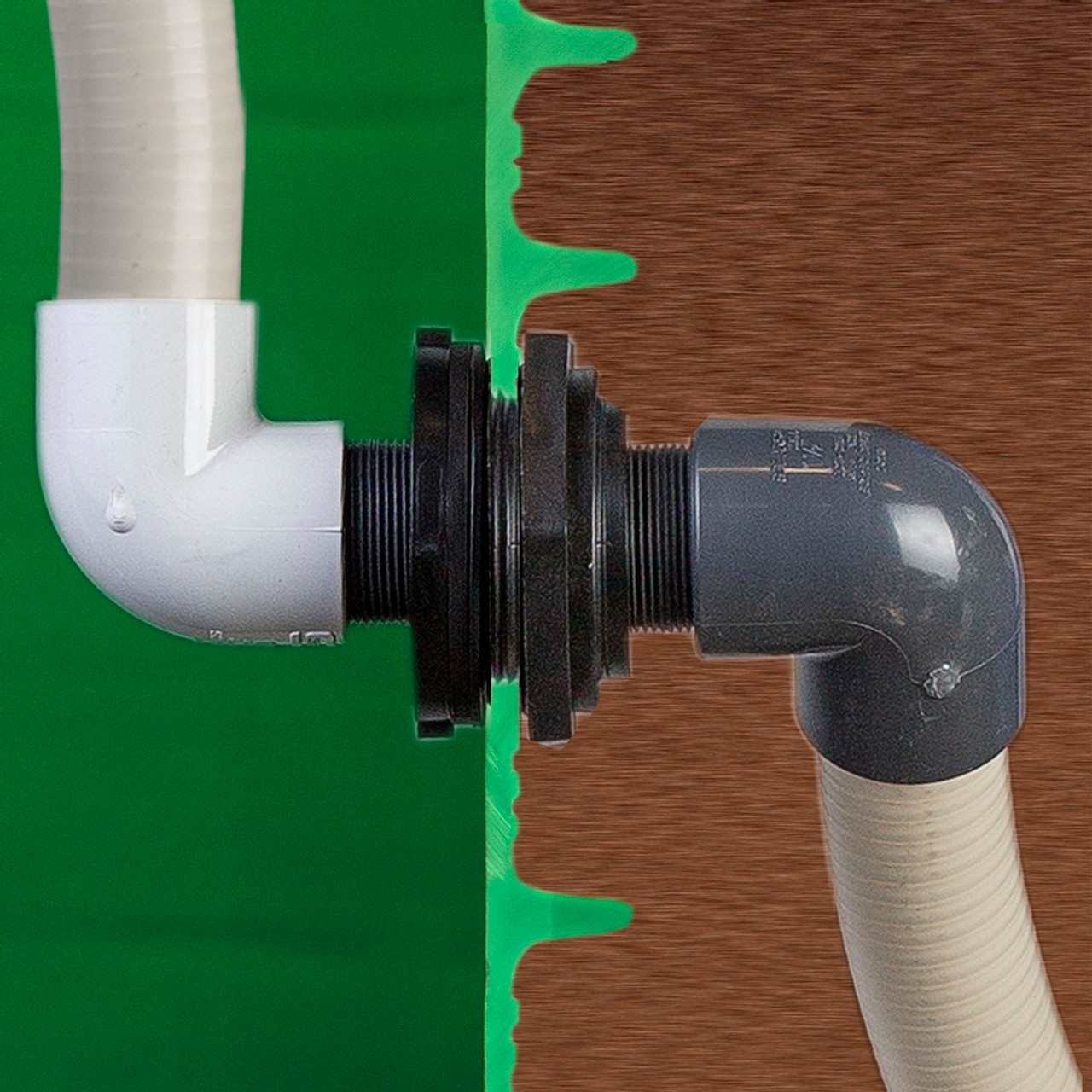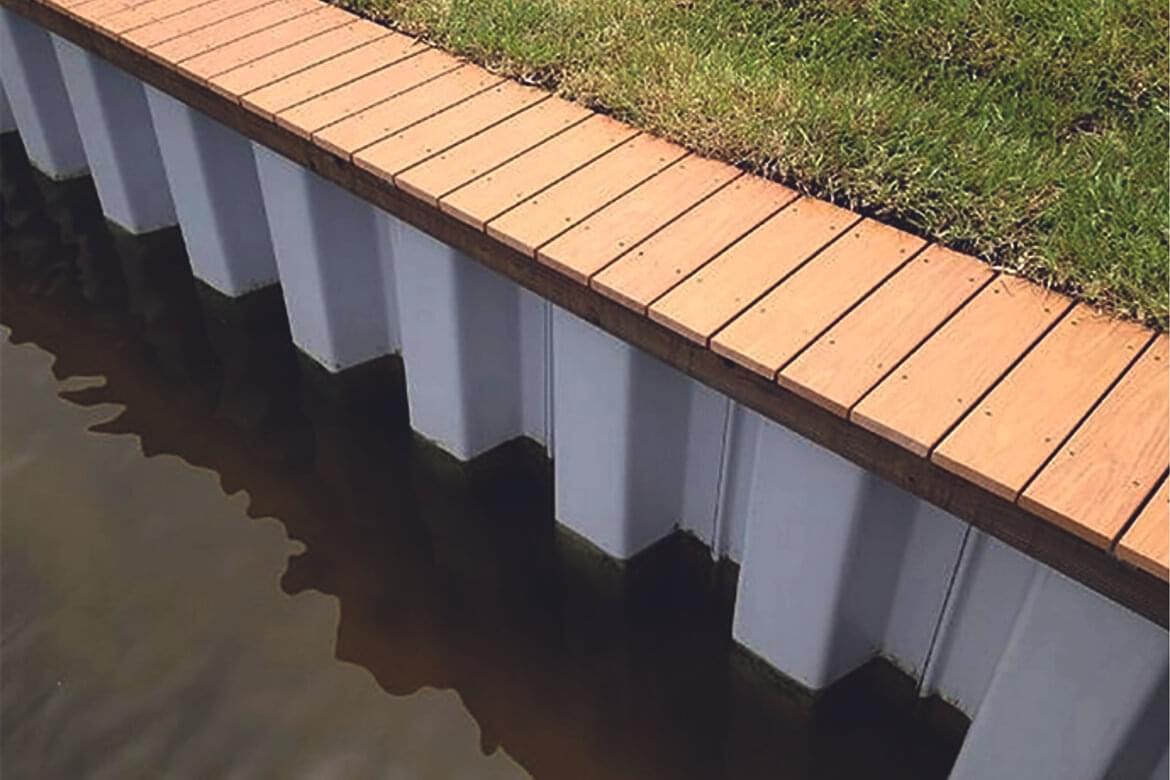Bulkhead on Lake Livingston: Key Materials Used in Construction Projects
Wiki Article
Exploring the Numerous Uses Bulkhead Frameworks in Modern Architecture
Bulkhead frameworks play a considerable duty in modern architecture, serving both visual and functional objectives. They can define rooms, improve storage solutions, and improve illumination. In commercial settings, they function as centerpieces that show brand name identification - Bulkhead on Lake Livingston. In addition, their assimilation usually supports audio management and lasting practices. Recognizing the full scope of their applications exposes much concerning contemporary style fads and individual experience. What ingenious uses bulkheads might arise in the future?Specifying Bulkhead Frameworks
Bulkhead frameworks play an essential role in modern-day architecture, functioning as necessary components in numerous building styles. These frameworks are typically defined as increased systems or ceilings, frequently utilized to hide mechanical systems, wiring, or pipes. Bulkheads can be located in both commercial and residential settings, where they provide a smooth mix of performance and visual appeals. Their layout can integrate lights fixtures and other attractive components, enhancing the general aesthetic appeal of an area.Typically created from products such as timber, drywall, or steel, bulkheads can be customized to fit the architectural design and demands of the structure (Bulkhead on Lake Livingston). They serve not only to conceal unpleasant facilities however also to create specified zones within open areas. By handling the flow of a room, bulkheads add to the spatial organization, making them a substantial aspect of contemporary architectural practice. Their definition encapsulates both useful and visual measurements.
Functional Applications in Residential Style
Bulkhead frameworks play a vital role in residential design by helping with space optimization methods that make best use of functional areas. They add visual layout aspects that enhance the visual appeal of living areas. Furthermore, these structures supply essential structural assistance remedies, making sure the integrity and security of the home.Space Optimization Strategies
As contemporary residential designs significantly focus on efficient usage of area, ingenious approaches arise to optimize performance without giving up aesthetics. One prominent method entails the combination of bulkhead frameworks, which can define locations while providing crucial storage options. These frameworks can be utilized to develop upright storage devices that boost both company and access. Furthermore, multi-functional furnishings, such as exchangeable couches and collapsible tables, enhances bulkhead designs, permitting rooms to adjust to differing needs. Open up layout additionally enhance spatial flow, encouraging versatility in operation. Including built-in shelving and recessed lighting within bulkheads likewise adds to a streamlined environment, guaranteeing that every square inch of space is made use of efficiently and sympathetically within the overall design.Aesthetic Layout Aspects

Structural Support Solutions
In modern-day household design, an efficient architectural support solution is essential for keeping the stability of spaces while optimizing design and capability. Bulkhead structures play a significant role in this situation, acting as both assistance and partitioning aspects. They can hide mechanical systems, such as plumbing and electric circuitry, while providing reinforcement to the ceiling and flooring systems. By strategically placing bulkheads, architects can create specified areas within open layout, boosting functionality without jeopardizing structural stability. In addition, these frameworks can suit illumination fixtures, adding to both looks and usefulness. To sum up, bulkhead frameworks are indispensable in household design, using versatile assistance solutions that improve both the performance and aesthetic charm of living rooms.Enhancing Aesthetics in Industrial Areas
When commercial rooms welcome ingenious bulkhead structures, they not just specify physical borders however likewise greatly improve the general appearances of the atmosphere. These building elements act as aesthetic focal factors, drawing focus and developing a sense of intrigue. By including varied products such as glass, timber, or metal, bulkheads can reflect a brand's identification and mission, adding to a cohesive design.Furthermore, the tactical positioning of bulkheads can adjust light and darkness, adding deepness and dimension to otherwise level areas. This interaction can transform a business location into an inviting environment, motivating customer interaction. Furthermore, using color and structure in bulkhead layout can evoke details feelings, improving the total consumer experience. Inevitably, the thoughtful combination of bulkhead structures raises the visual appeal of commercial areas, making them not only practical but also visually enchanting, therefore cultivating a long-term perception on visitors.
Acoustic Efficiency and Sound Monitoring
Efficient acoustic efficiency plays an important role in modern architecture, specifically within commercial areas where sound administration is important. Bulkhead structures can substantially boost acoustic top qualities by taking in audio, minimizing reverberation, and mitigating noise transfer in between areas. These functions are specifically useful in environments such as theaters, restaurants, and workplaces, where clear interaction and a pleasurable auditory experience are vital.The critical placement and style of bulkheads can help develop sound-buffer areas, properly separating loud locations from quieter ones. Products made use of in bulkhead building, such as soft surfaces and acoustic panels, contribute to their sound-dampening capabilities. Furthermore, the unification of bulkheads permits the assimilation of sound-absorbing components without compromising aesthetic charm. By addressing acoustic performance, architects can develop unified atmospheres that boost convenience, improve individual experience, and advertise productivity, making bulkheads a vital part in the layout of modern industrial spaces.
Integrating Bulkheads for Efficient Room Utilization
Although frequently neglected, the combination of bulkheads in building layout can significantly enhance space utilization in modern-day buildings. These architectural aspects offer multiple sensible functions, supplying a method to conceal mechanical systems, electric wiring, and pipes without jeopardizing aesthetics. By more tips here purposefully positioning bulkheads, engineers can develop defined areas within open floor strategies, consequently facilitating much better company and flow.Moreover, bulkheads can integrate storage space remedies and lights attributes, maximizing the functionality of or else thrown away vertical area. In household setups, they may mark zones such as cooking areas or living locations, while in industrial spaces, they can enhance the performance of layouts by clearly marking pathways and work areas.
Ultimately, the thoughtful assimilation of bulkheads adds to a more organized and aesthetically attractive setting, allowing for adaptable rooms that can progress with Get the facts the requirements of their passengers. This technique not just enhances space yet likewise promotes an extra harmonious interaction in between kind and feature.
Bulkheads in Public Style

Building Aesthetic Enhancements
While several building aspects goal for performance, bulkheads in public design serve a twin objective by enhancing visual appeal. These structures often create visual rate of interest through their style, integrating flawlessly with surrounding aspects. By utilizing different products, appearances, and colors, bulkheads can add to an one-of-a-kind identification for public rooms, such as flight terminals, galleries, and libraries. Their critical placement helps to define areas, guiding site visitors while adding depth to the total layout. In addition, bulkheads can emphasize lighting, producing dynamic atmospheres that alter throughout the day. This aesthetic enhancement not just elevates the site visitor experience but also promotes a feeling of location, making bulkheads a crucial consideration in contemporary public style. In general, bulkheads symbolize the fusion of form and feature.
Architectural Assistance Solutions
As engineers seek innovative ways to enhance the architectural integrity of public rooms, bulkheads become crucial elements in the style and construction procedure. These frameworks provide vital assistance, specifically in locations subject to heavy foot traffic or vibrant loads. By dispersing weight equally, bulkheads help protect against architectural failure while permitting functional layout options. In large places, such as arenas and convention facilities, bulkheads are commonly incorporated into the total architectural structure, ensuring stability and safety. Furthermore, they can promote the unification of utilities and mechanical systems, adding to the performance of room usage. Ultimately, bulkheads represent a vital remedy in contemporary public architecture, enhancing both performance and security in community-focused environments.Environmental Management Steps
Integrating environmental management steps right into public style has come to be significantly crucial as urban developers focus on sustainability together with structural support. Bulkhead structures offer a twin function in this regard, serving as barriers versus erosion and flooding while all at once enhancing the aesthetic charm of city landscapes. Their design often consists of natural elements such as plants, which can improve air quality and supply environments for wildlife. In addition, bulkheads can be crafted with permeable materials that enable water absorption, lowering drainage and advertising groundwater recharge. This combination of eco-friendly considerations not only protects the atmosphere but also cultivates neighborhood resilience against climate adjustment. By utilizing bulkheads properly, designers add to sustainable metropolitan advancement that aligns with modern ecological goals.Future Patterns in Bulkhead Layout
Arising trends in bulkhead style show a growing focus on sustainability, technology, and performance in modern architecture. Developers are increasingly integrating green products, such as recycled compounds and bioplastics, to lower ecological impact. Furthermore, the integration of smart modern technology is coming to be common, enabling bulkheads to offer multi-functional objectives, including power storage space and climate control.
In urban setups, modular bulkhead systems are getting grip, supplying flexibility in design and simplicity of installation. These systems can be adapted to various landscapes, enabling effective room use. In addition, aesthetic factors to consider are progressing; bulkheads are currently being designed to improve visual charm, typically including imaginative elements that resonate with neighborhood culture.
As environment durability becomes a priority, future bulkhead designs will likely focus on flood defense and stormwater monitoring, making certain architectural honesty while addressing ecological difficulties. This change represents an all natural approach to style that meets both eco-friendly responsibilities and human demands.
Regularly Asked Inquiries
What Products Are Frequently Used for Bulkhead Construction?
Common materials for bulkhead building include concrete, steel, wood, and composite materials. These options supply longevity, structural honesty, and resistance to ecological factors, making them appropriate for numerous applications in building and construction and design projects.Exactly How Do Bulkheads Influence Structure Power Performance?
Bulkheads boost constructing power effectiveness by providing thermal insulation and lowering air leakage (Bulkhead on Lake Livingston). They help preserve interior temperatures, therefore reducing heating and cooling needs, eventually causing reduced power prices and improved environmental sustainabilityExist Any Building Regulations Details to Bulkhead Structures?
Yes, building codes certain to bulkhead frameworks exist, varying by place. These regulations generally resolve safety and security, architectural honesty, and access, guaranteeing that bulkheads meet needed requirements for building and style within a provided jurisdiction.Can Bulkheads Be Easily Modified or Gotten Rid Of Later?
Bulkheads can usually be customized or gotten rid of, depending on their layout and building and construction. Such changes might require mindful preparation and adherence to structure codes to assure architectural integrity and security are kept throughout the process.What Are the Prices Associated With Mounting Bulkhead Structures?
The prices connected with mounting bulkhead structures can differ considerably, commonly affected by products, layout complexity, and labor. Usually, costs range from modest to high, relying on the project's details requirements and location.Bulkhead structures play an essential role in modern-day architecture, serving as necessary elements in different building designs. Bulkhead structures play a necessary function in property style by facilitating area optimization strategies that maximize functional areas. Typically neglected, the combination of bulkheads in building design can significantly boost area utilization in modern structures. As designers seek cutting-edge methods to improve the architectural integrity of public spaces, bulkheads arise as vital parts in the layout and building and construction process. The prices linked with setting up bulkhead frameworks can vary substantially, usually affected by products, layout intricacy, and labor.
Report this wiki page